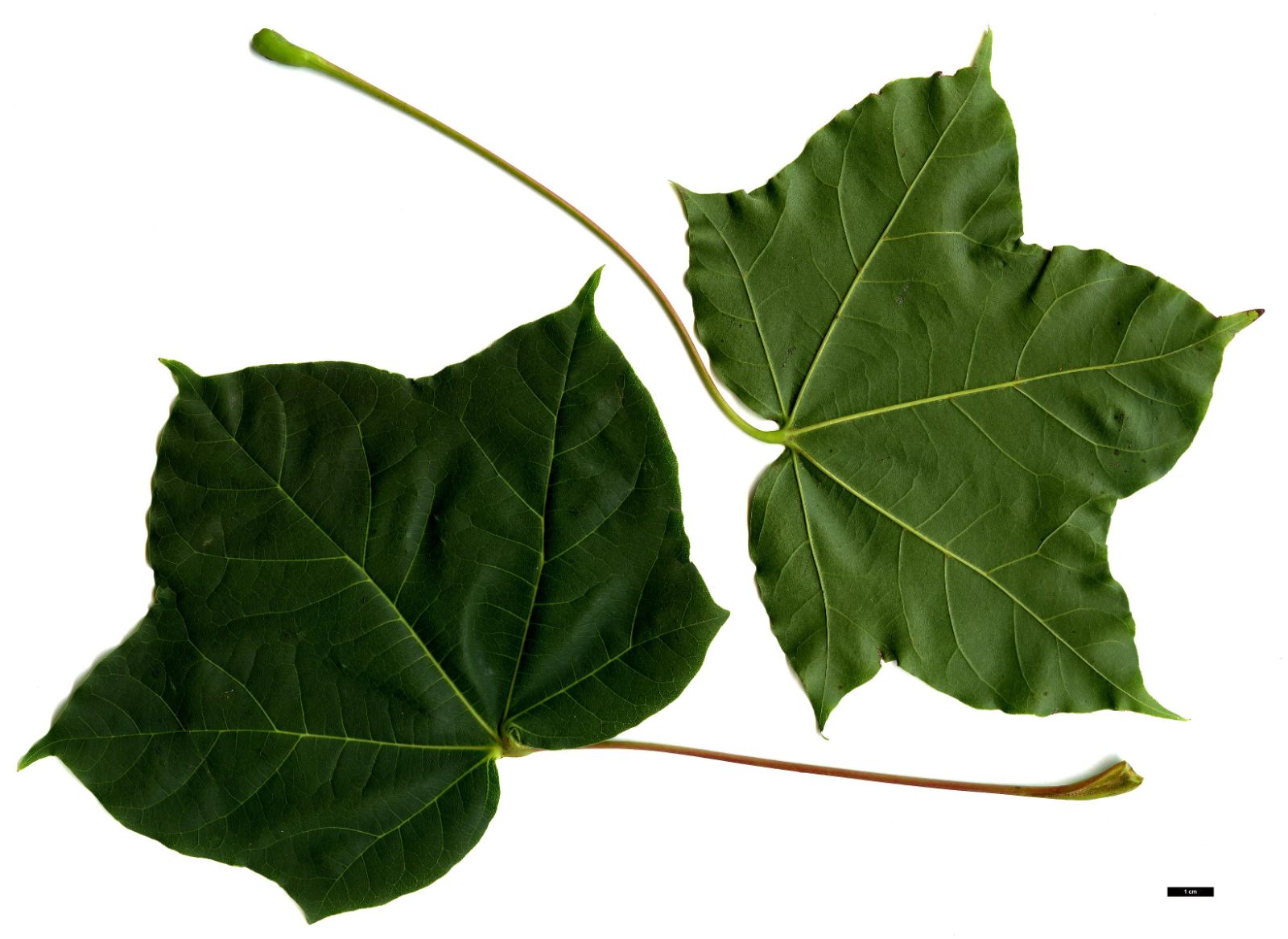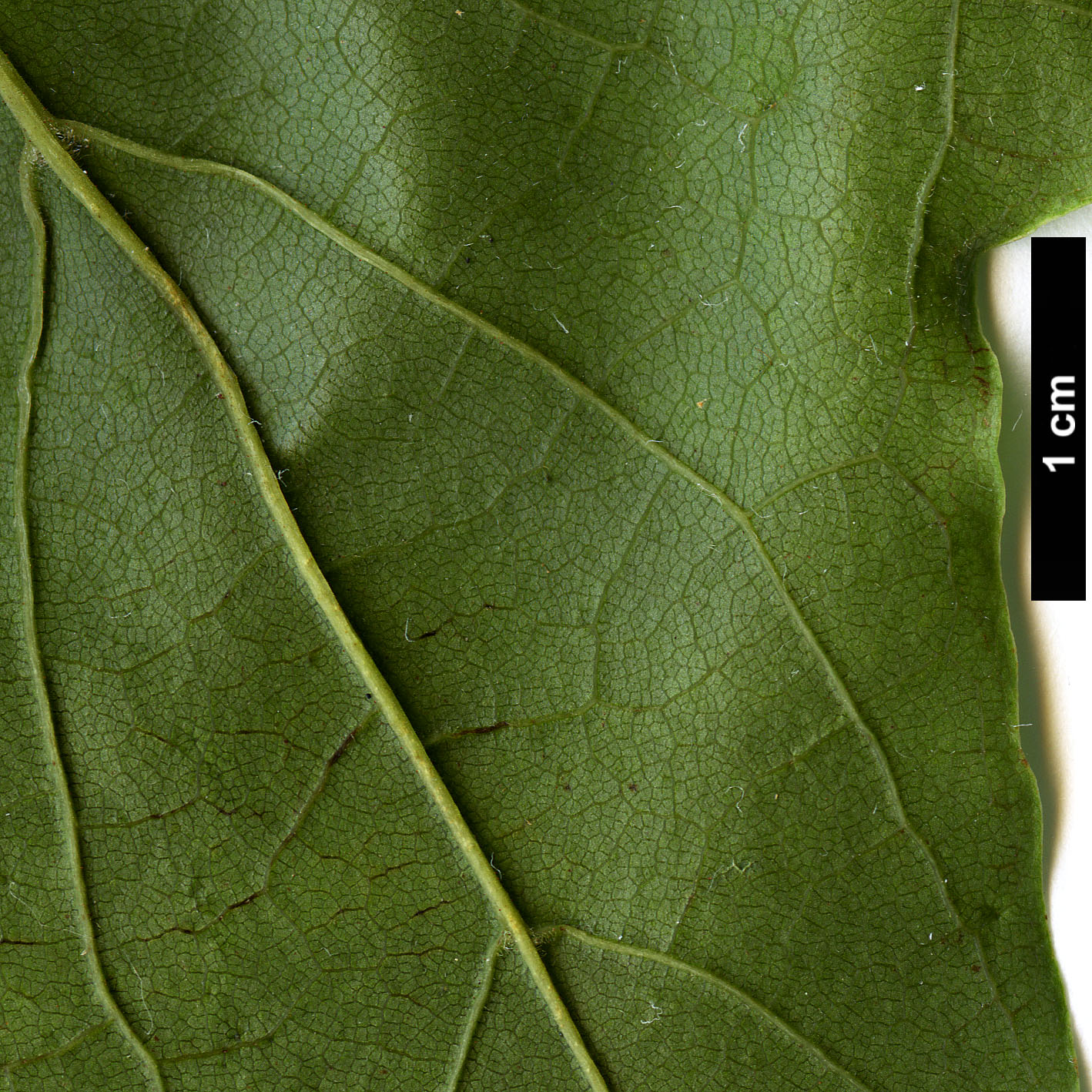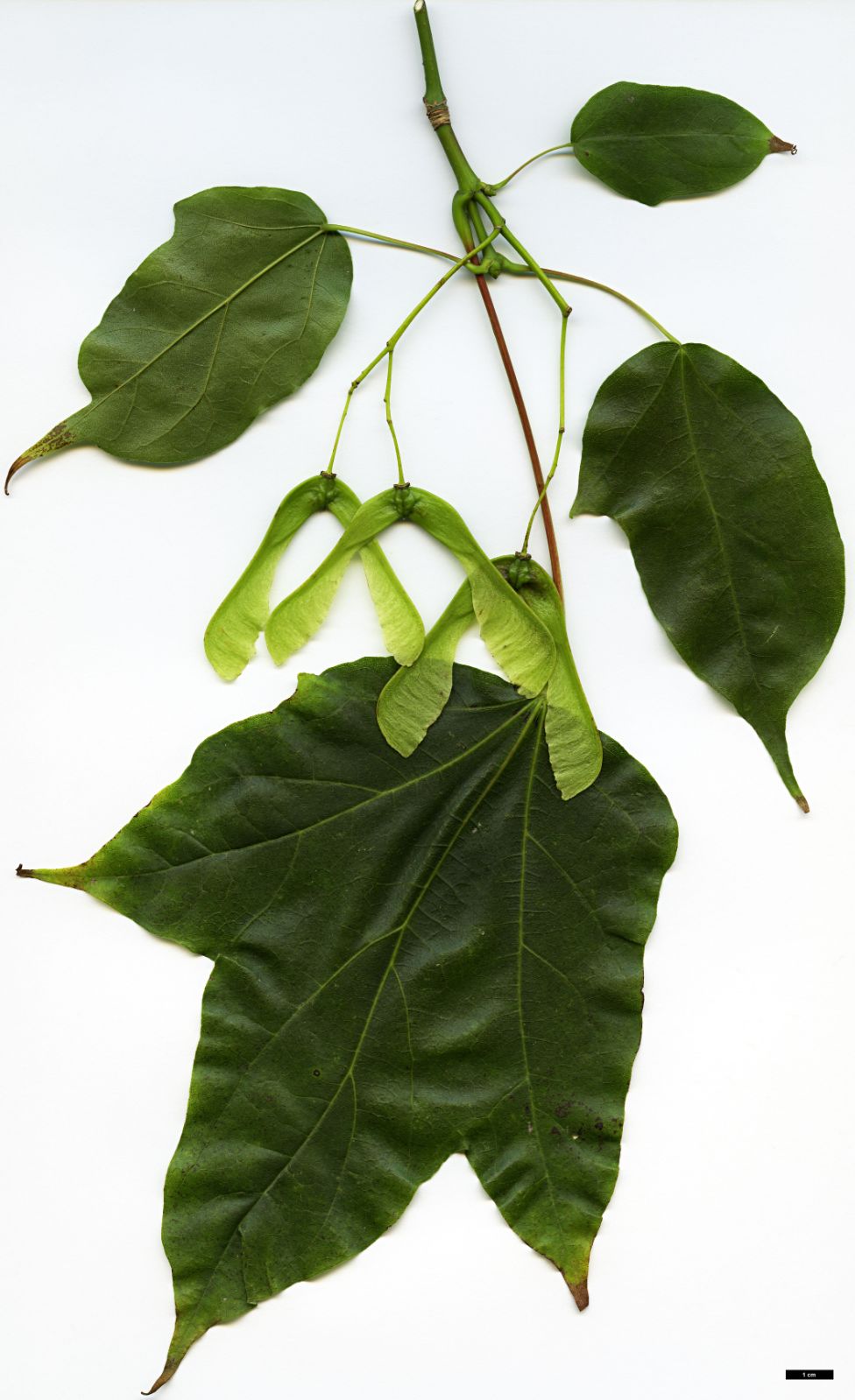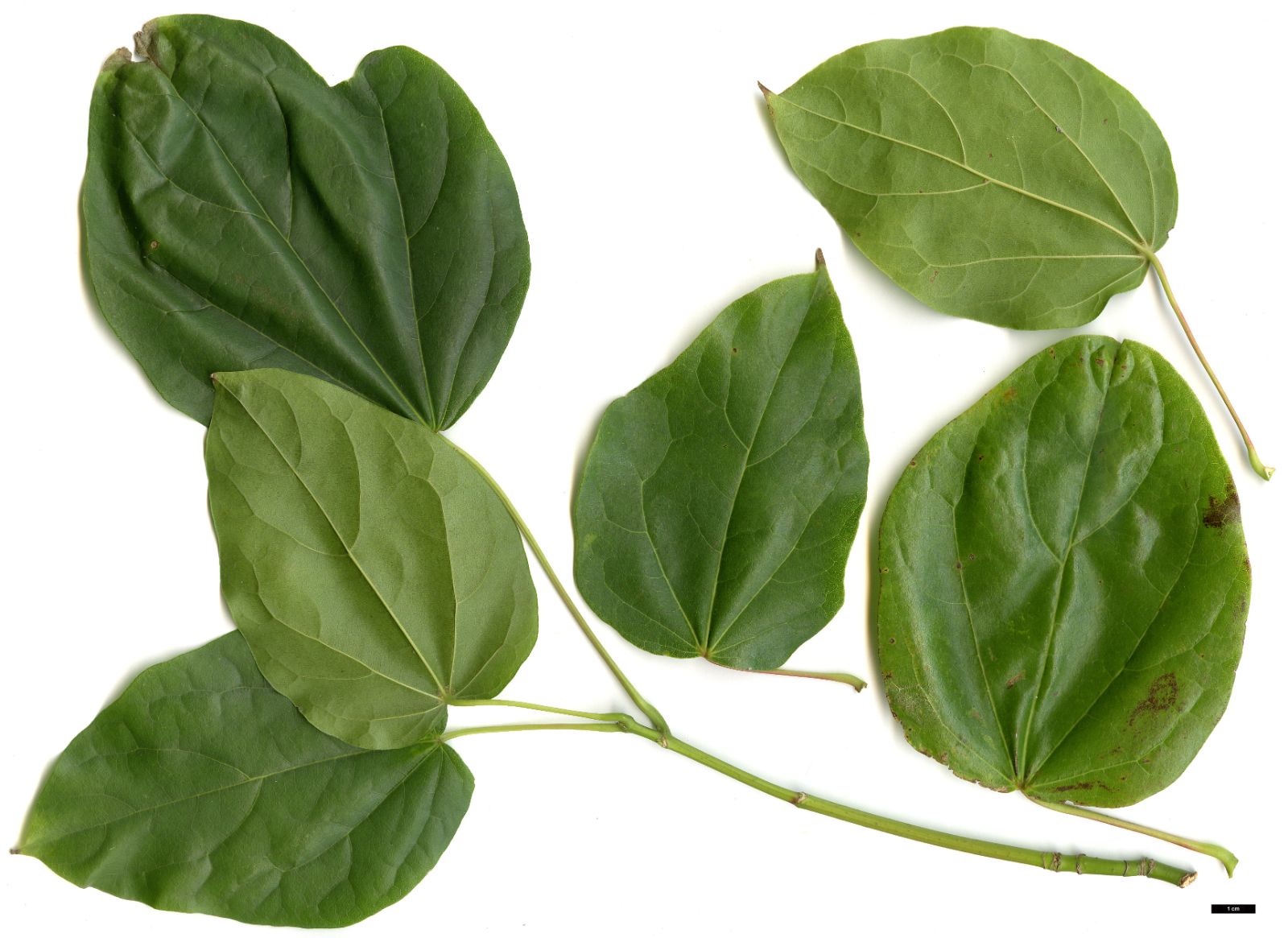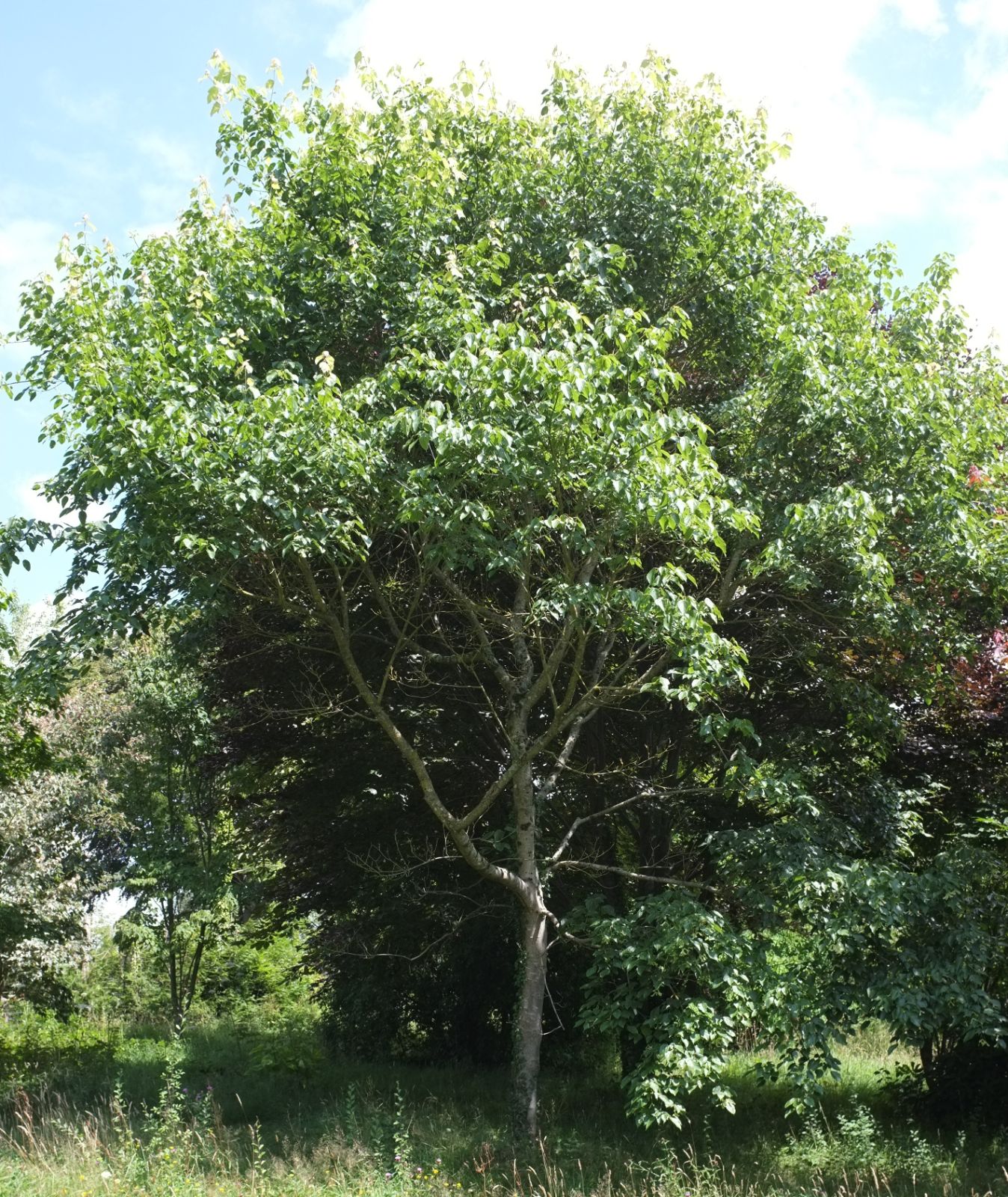Acer amplum
Sponsor
Kindly sponsored by
The Wynkcoombe Arboretum
Credits
Dan Crowley (2020)
Recommended citation
Crowley, D. (2020), 'Acer amplum' from the website Trees and Shrubs Online (treesandshrubsonline.
Genus
- Acer
- Sect. Platanoidea
Synonyms
- Acer bodinieri H. Léveillé var. convexum W.P. Fang
- Acer firmianioides W.C. Cheng
- Acer longipes subsp. amplum (Rehd) P.C. de Jong
- Acer longipes subsp. firmianoides (W.C. Cheng) P.C. de Jong
Infraspecifics
Other taxa in genus
- Acer acuminatum
- Acer argutum
- Acer barbinerve
- Acer buergerianum
- Acer caesium
- Acer calcaratum
- Acer campbellii
- Acer campestre
- Acer 'Candy Stripe'
- Acer capillipes
- Acer cappadocicum
- Acer carpinifolium
- Acer 'Cascade'
- Acer caudatum
- Acer ceriferum
- Acer chapaense
- Acer chienii
- Acer circinatum
- Acer cissifolium
- Acer × conspicuum
- Acer cordatum
- Acer coriaceifolium
- Acer × coriaceum
- Acer crataegifolium
- Acer davidii
- Acer diabolicum
- Acer distylum
- Acer divergens
- Acer duplicatoserratum
- Acer elegantulum
- Acer erianthum
- Acer 'Esk Flamingo'
- Acer fargesii
- Acer fenzelianum
- Acer flabellatum
- Acer forrestii
- Acer franchetii
- Acer × freemanii
- Acer fulvescens
- Acer 'Gimborn'
- Acer ginnala
- Acer glabrum
- Acer 'Gold Coin'
- Acer granatense
- Acer grandidentatum
- Acer griseum
- Acer heldreichii
- Acer henryi
- Acer × hillieri
- Acer hookeri
- Acer hyrcanum
- Acer japonicum
- Acer kawakamii
- Acer komarovii
- Acer laevigatum
- Acer laurinum
- Acer laxiflorum
- Acer lobelii
- Acer longipes
- Acer macrophyllum
- Acer mandshuricum
- Acer maximowiczianum
- Acer maximowiczii
- Acer metcalfii
- Acer miaotaiense
- Acer micranthum
- Acer 'Mindavi'
- Acer 'Minorient'
- Acer miyabei
- Acer miyabei × campestre
- Acer monspessulanum
- Acer morifolium
- Acer 'Mozart'
- Acer oblongum
- Acer obtusifolium
- Acer okamotoanum
- Acer oliverianum
- Acer opalus
- Acer orientale
- Acer palmatum
- Acer papilio
- Acer pauciflorum
- Acer pectinatum
- Acer pensylvanicum
- Acer pentaphyllum
- Acer pentapotamicum
- Acer pictum
- Acer pilosum
- Acer pinnatinervium
- Acer platanoides
- Acer platanoides × amplum
- Acer platanoides × truncatum
- Acer × pseudoheldreichii
- Acer pseudoplatanus
- Acer pseudosieboldianum
- Acer pubinerve
- Acer pycnanthum
- Acer rubescens
- Acer rubrum
- Acer rufinerve
- Acer saccharinum
- Acer saccharum
- Acer sempervirens
- Acer 'Serpentine'
- Acer serrulatum
- Acer shenkanense
- Acer sieboldianum
- Acer sikkimense
- Acer 'Silver Cardinal'
- Acer 'Silver Ghost'
- Acer sinense
- Acer sinopurpurascens
- Acer spicatum
- Acer stachyophyllum
- Acer taronense
- Acer tataricum
- Acer tegmentosum
- Acer tenellum
- Acer tetramerum
- Acer tibetense
- Acer tonkinense
- Acer triflorum
- Acer truncatum
- Acer tschonoskii
- Acer turkestanicum
- Acer tutcheri
- Acer ukurunduense
- Acer velutinum
- Acer wardii
- Acer 'White Tigress'
- Acer wilsonii
- Acer × zoeschense
A deciduous tree to 25 m tall in the wild. Bark dark grey, somewhat smooth. Branchlets glabrous, purplish or greenish, turning greyish-brown only after several years. Buds, subglobose to ovoid, with 5 to 6 pairs of imbricate scales, purplish-brown. Leaves chartaceous to subcoriaceous, broadly pentagonal in outline, base subcordate to rounded, 3 to 5 lobed, 5–25 × 7–26 cm, lobes oblong to broadly ovate, apically abruptly acute to acuminate, margins entire, upper surface bright green, lower surface pale green, glabrous; petiole 4–14 cm long, green, glabrous, often grooved, broadest at base, exuding a milky sap when cut; autumn colours yellow. Inflorescence terminal, corymbose, pendulous, many flowered. Flowers yellowish-green, 5-merous, usually andromonoecious, pedicels short, glabrous, sepals oblong to ovate, emarginate at apex, petals longer than sepals, stamens 8, inserted in the middle or outside of the nectar disc. Samaras 2.5 to 5.5 cm long, wings spreading obtusely to horizontally. Nutlets flattened. Flowering from April to May, with or after unfolding leaves, fruiting in October. (Krüssmann 1984; van Gelderen et al. 1994; van Gelderen & van Gelderen 1999; Xu et al. 2008).
Distribution China South Anhui, Fujian, north western Guangdong, Guangxi, Guizhou, Hubei, Hunan, Jiangxi, Sichuan, Yunnan, Zhejiang
Habitat Warm temperate and temperate forests and valleys between 1,000 and 2,000 m asl.
USDA Hardiness Zone 6-7
RHS Hardiness Rating H5
Conservation status Least concern (LC)
Taxonomic note Along with its lower taxa, this species was treated as part of a broad interpretation of Acer longipes by van Gelderen et al. (1994), though as a separate species by Xu et al. (2008), whose treatment is followed here.
Acer amplum was introduced in its typical form by Ernest Wilson in 1901 from western Sichuan and then later by George Forrest, from Yunnan. Mature examples of the species grown at the Sir Harold Hillier Gardens, Hampshire and at Borde Hill, West Sussex, are generally considered to be derived from the Forrest introduction (Bean 1976a). Scion wood from the Hillier tree is the source of a specimen at Westonbirt which, measuring 12 m tall in 2014 (The Tree Register 2018), had been relocated from the site of the current on-site restaurant to the east end of Main Drive in the Old Arboretum, where it has evidently overcome the transplantation shock rather well. It has a broad crown and exhibits the stout branchlets that help distinguish it from other green-shooted members of section Platanoidea. The broad shouldered lobes also help separate the type from its closest relatives.
Material from Emei Shan, Sichuan is grown at Rogów Arboretum. This plant ‘has very peculiar, coarse texture with large, coriaceous leaves, thick, green shoots with green buds, large inflorescences and big samaras’ (P. Banaszczak, pers. comm. 2020). Usually considered ‘barely hardy’ in Poland, it appears happier in the warming climate there (P. Banaszczak, pers. comm. 2020).
The cultivar ‘Gold Coin’, sometimes attributed to this species, is treated independently here on account of its likely hybrid origin.
subsp. bodinieri (H. Léveillé) Y.S. Chen
Sect. Platanoidea
Synonyms
Acer bodinieri H. Léveillé
Acer amplum var. jianshuiense W.P. Fang
Acer bodinieri var. nayongense (W.P. Fang) Rushforth
Acer longipes var. hunanense W.P. Fang & W.K. Hu
Acer nayongense W.P. Fang
Acer nayongense var. hunanense (W.P. Fang & W.K. Hu) W.P. Fang & W.K. Hu.
Subsp. bodinieri differs from the typical subspecies in its usually 3-lobed leaves and narrower, upward pointing lobes. Samaras 2.8–3.5 cm long, wings spreading acutely. Nutlets flattened. Flowering from March to April, fruting in October. (Xu et al. 2008).
Distribution
- Myanmar
- China – Guangxi, Guizhou, Hunan, Yunnan
RHS Hardiness Rating: H4
USDA Hardiness Zone: 8-9
Taxonomic note This taxon was discussed at species rank by Rushforth (1999) but treated as a subpecies of Acer amplum by Xu et al. (2008), whose treatment is followed here. van Gelderen et al. (1994) erroneously included it in the synonymy of A. cappadocicum subsp. sinicum var. tricaudatum. A. chapaense, treated as synonymous with this taxon by Xu et al. (2008), is treated as distinct here.
A slender individual that fits this subspecies grows at Tregrehan, Cornwall, and even in this mild setting it is prone to late spring frosts. It appears otherwise absent from cultivation. Though Xu et al. (2008) include only Chinese provinces in its distribution, it reportedly also occurs in Myanmar, though only just (K. Rushforth, pers. comm. 2020).
subsp. catalpifolium (Rehder) Y.S. Chen
Synonyms
Acer catalpifolium Rehder
Acer cappadocicum Gled. subsp. catalpifolium (Rehder) A. E. Murray.
Acer longipes subsp. catalpifolium (Rehder) de Jong
Subsp. catalpifolium differs from the typical subspecies in its leaves unlobed or rarely lobed, ovate to ovate oblong, base rounded, 5–15 × 8–25 cm, margins entire. Flowering April, fruiting September to October. (van Gelderen et al. 1994; Xu et al. 2008).
Distribution
- China – North eastern Guangxi, northern Guizhou, Sichuan
RHS Hardiness Rating: H5
USDA Hardiness Zone: 8-9
Taxonomic note This taxon is treated as a subspecies of Acer longipes by van Gelderen et al. (1994) but as a subspecies of A. amplum by Xu et al. (2008), whose treatment is followed here. It was originally described by Rehder at species rank Sargent (1913).
Represented in only a small number of collections, the source of trees of Acer amplum subsp. catalpifolium is somewhat unclear. Collected by Wilson, Gregory (pers. comm. 2007 in Grimshaw & Bayton 2009) speculated that plants could have been derived from W 1359, collected in 1908, or W 4208, from 1910, both gathered in western Sichuan (Sargent 1913). The ‘particularly fine plant’ at Chevithorne Barton, Devon, mentioned by Grimshaw & Bayton (2009 p. 90), standing at 10–11 m in 2006, measured 17 m tall in 2017 (The Tree Register 2018), indicating a steady growth rate. A younger plant at Arboretum Wespelaar, planted in 2012, has attained over 3 m as of March 2020, located in a sheltered area. It leaves out fairly early and is thus somewhat sensitive to spring frosts (K. Camelbeke pers. comm. 2020). The plant was sourced from Cédric Basset, proprietor of Pépinière AOBA, ‘via Vasterival’ (K. Camelbeke pers. comm. 2020). Basset purchased a specimen from Mallet Court Nursery some 20 years ago, which as an isolated specimen, now produces seedlings (K. Camelbeke pers. comm. 2020). The only recent introduction appears to be BHMWZ 092, which grows at Quarryhill, California (American Public Gardens Association 2017).
subsp. tientaiense (C.K. Schneider) Y.S. Chen
Synonyms
Acer longipes Franchet ex Rehder var. tientaiense C.K. Schneider
Acer amplum var. tientaiense (C.K. Schneider) Rehder
Acer tientaiense (C.K. Schneider) Pojarkova
Subsp. tientaiense differs from the typical subspecies in its usually 3-lobed leaves and narrower, laterally pointing lobes. Samaras 2.5–3.5 cm long, wings spreading obtusely. Nutlets flattened. Flowering in April, fruting in September. (Xu et al. 2008).
Distribution
- China – Fujian, Jiangxi, Zhejiang
RHS Hardiness Rating: H4
USDA Hardiness Zone: 8-9
Subsp. tientaiense was noted as being in cultivation by Bean (1976a) (as var. tientaiense) though the only mature plant currently known was planted at the Sir Harold Hillier Gardens, Hampshire, in the 1980s, sourced from the Chinese Academy of Forestry. However, whether this plant truly belongs to this subspecies is questionable (K. Rushforth, pers. comm. 2020). Its true identity is yet to be satisfactorily resolved. A plant derived from the Hillier tree is, as of March 2020, on the nursery at Westonbirt Arboretum, Gloucestershire (A. Vry, pers. comm. 2020).



